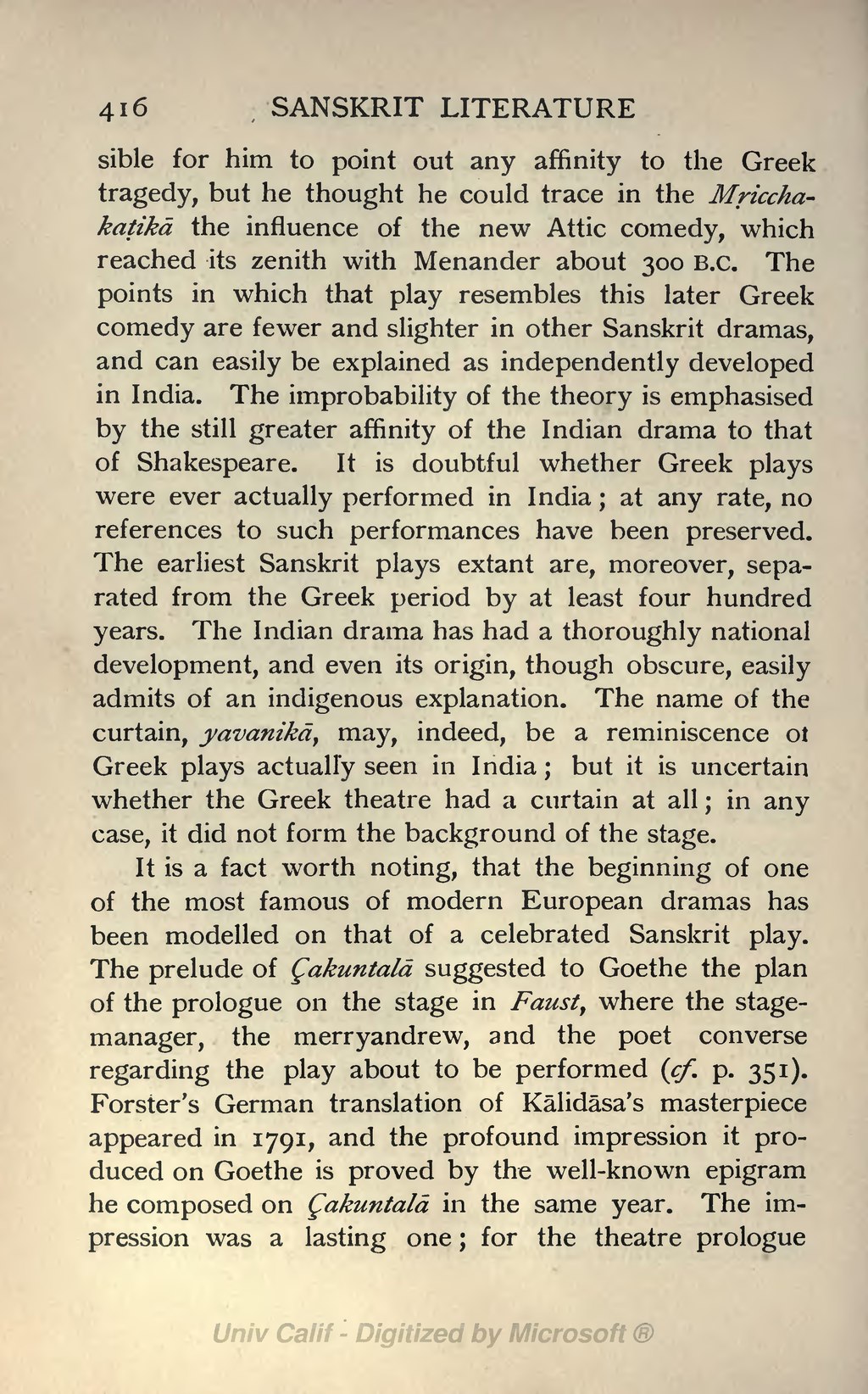sible for him to point out any affinity to the Greek tragedy, but he thought he could trace in the Mṛicchakaṭikā the influence of the new Attic comedy, which reached its zenith with Menander about 300 B.C. The points in which that play resembles this later Greek comedy are fewer and slighter in other Sanskrit dramas, and can easily be explained as independently developed in India. The improbability of the theory is emphasised by the still greater affinity of the Indian drama to that of Shakespeare. It is doubtful whether Greek plays were ever actually performed in India; at any rate, no references to such performances have been preserved. The earliest Sanskrit plays extant are, moreover, separated from the Greek period by at least four hundred years. The Indian drama has had a thoroughly national development, and even its origin, though obscure, easily admits of an indigenous explanation. The name of the curtain, yavanikā, may, indeed, be a reminiscence of Greek plays actually seen in India; but it is uncertain whether the Greek theatre had a curtain at all; in any case, it did not form the background of the stage.
It is a fact worth noting, that the beginning of one of the most famous of modern European dramas has been modelled on that of a celebrated Sanskrit play. The prelude of Çakuntalā suggested to Goethe the plan of the prologue on the stage in Faust, where the stage-manager, the merryandrew, and the poet converse regarding the play about to be performed (cf. p. 351). Forster's German translation of Kālidāsa's masterpiece appeared in 1791, and the profound impression it produced on Goethe is proved by the well-known epigram he composed on Çakuntalā in the same year. The impression was a lasting one; for the theatre prologue
